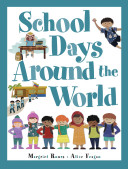
“What is a school? Is it a building with classrooms? Or can it be any place where children learn?” The fascinating stories that follow will expand how young readers think of school, as they learn about the experiences of real children in thirteen different countries around the world.









